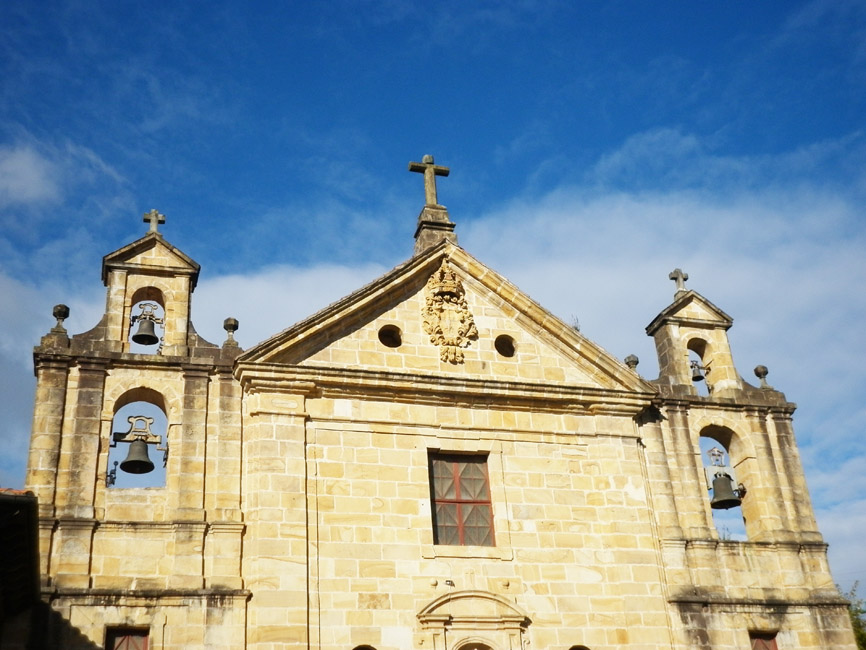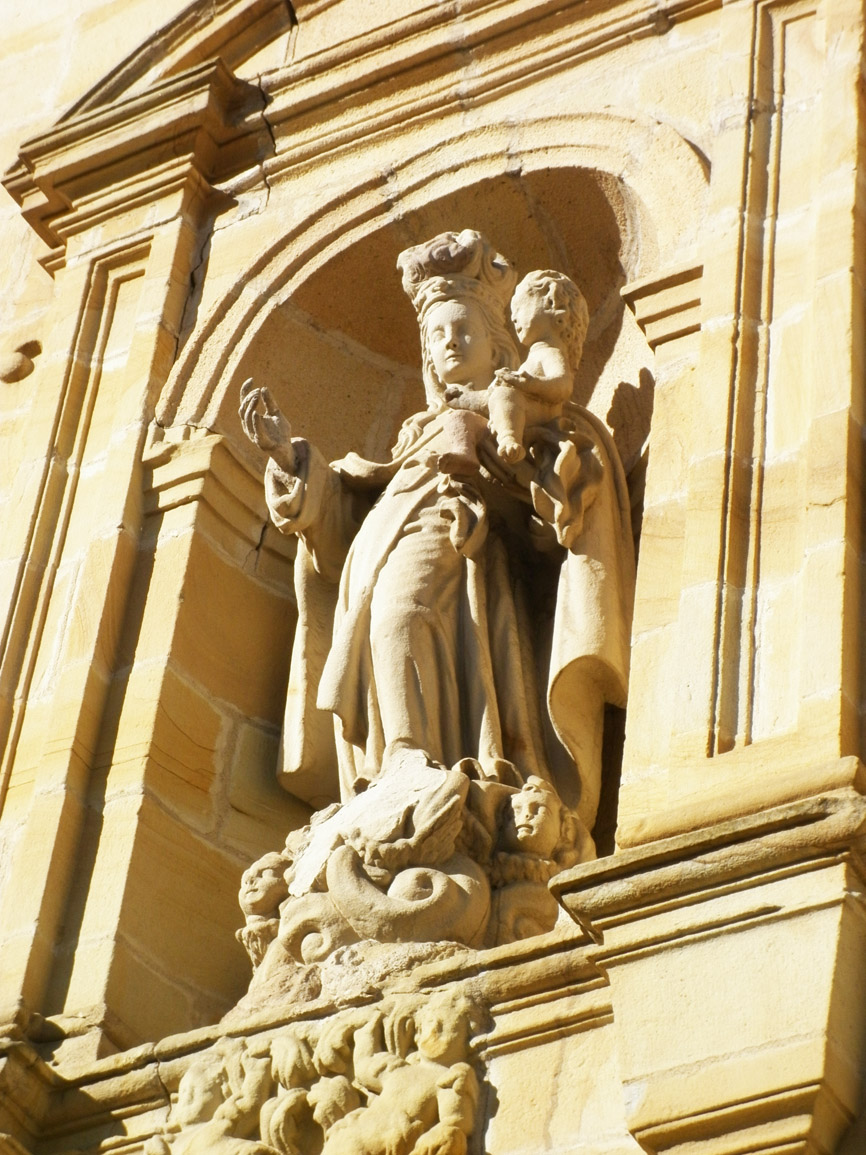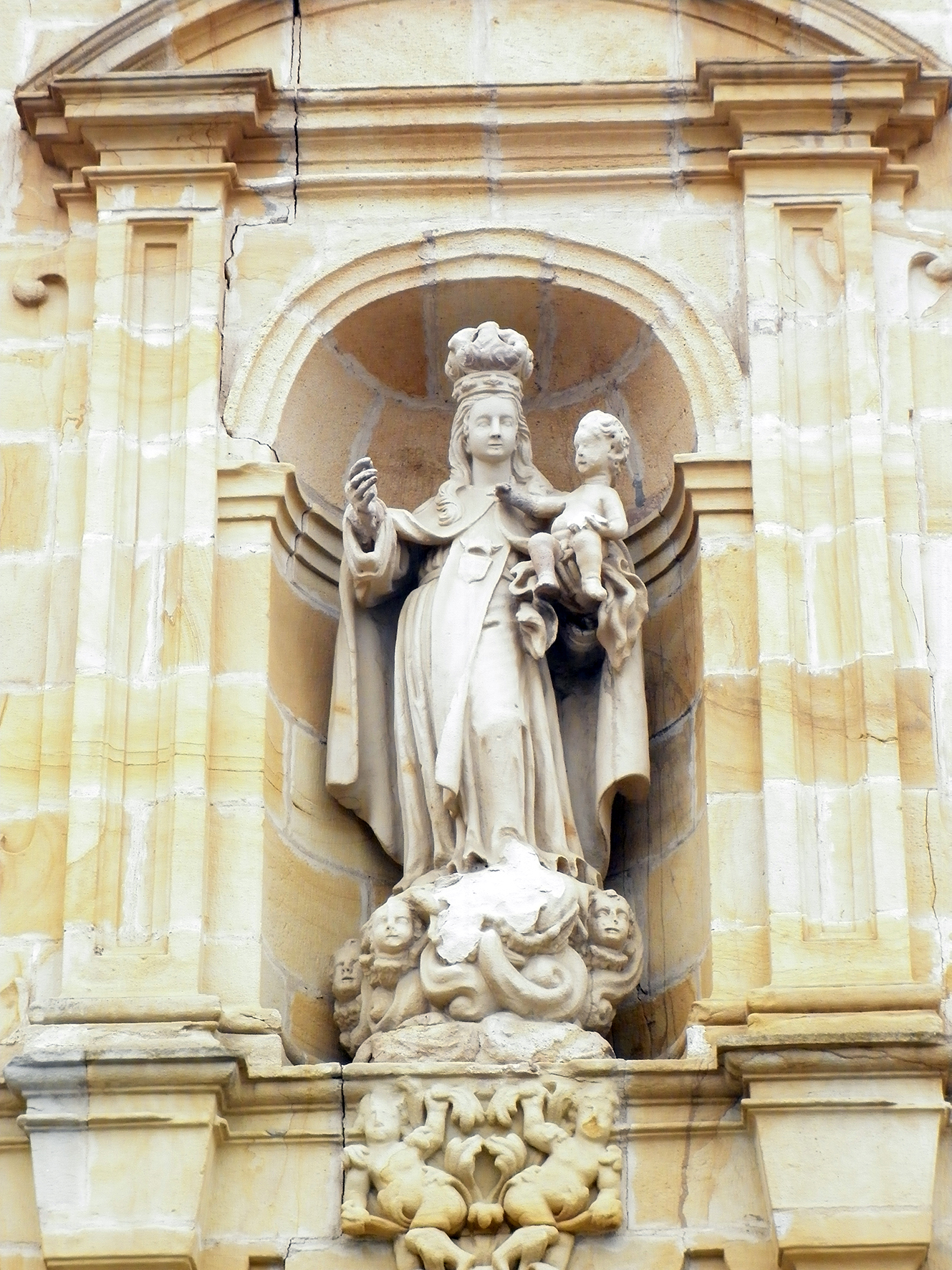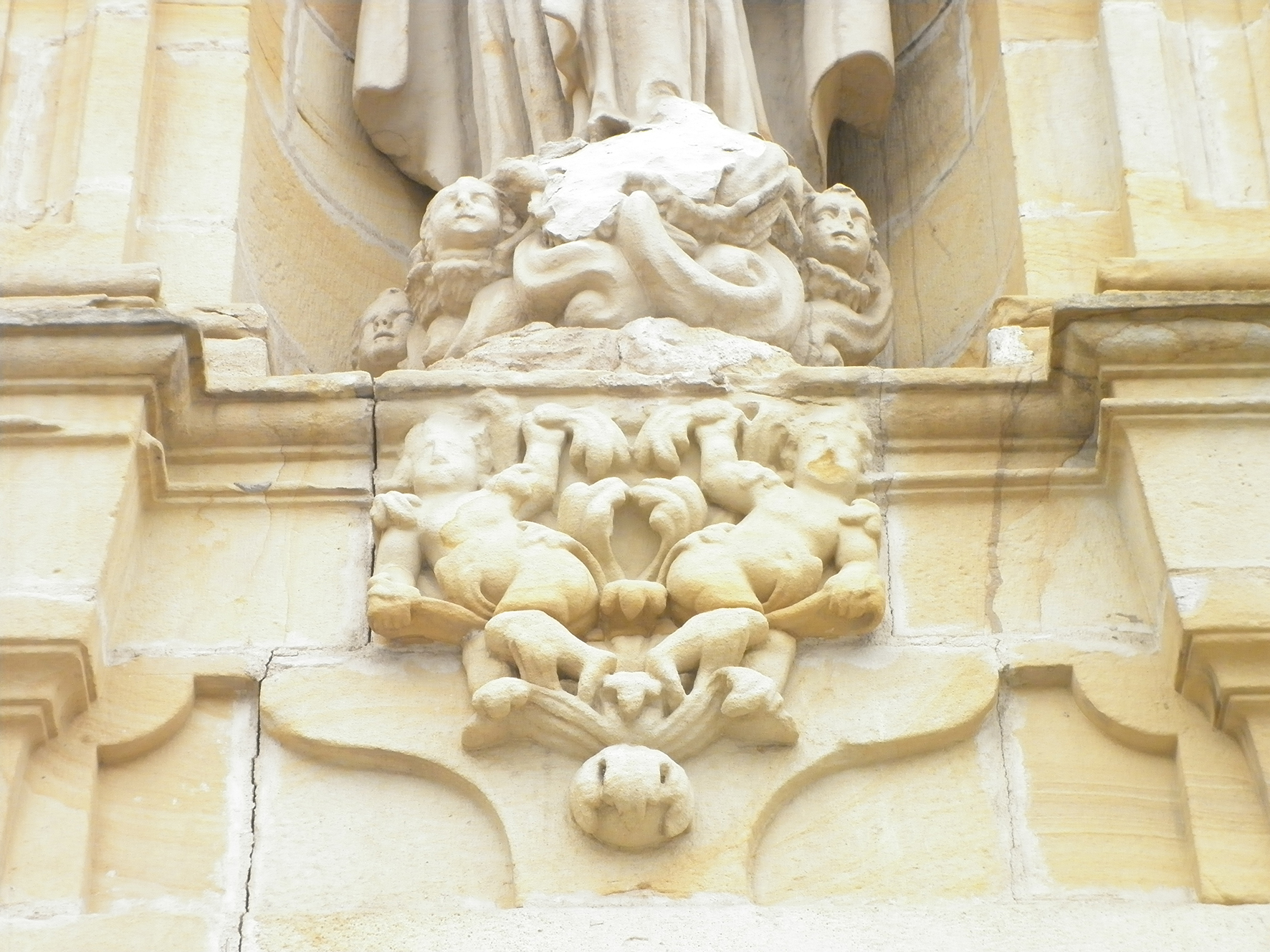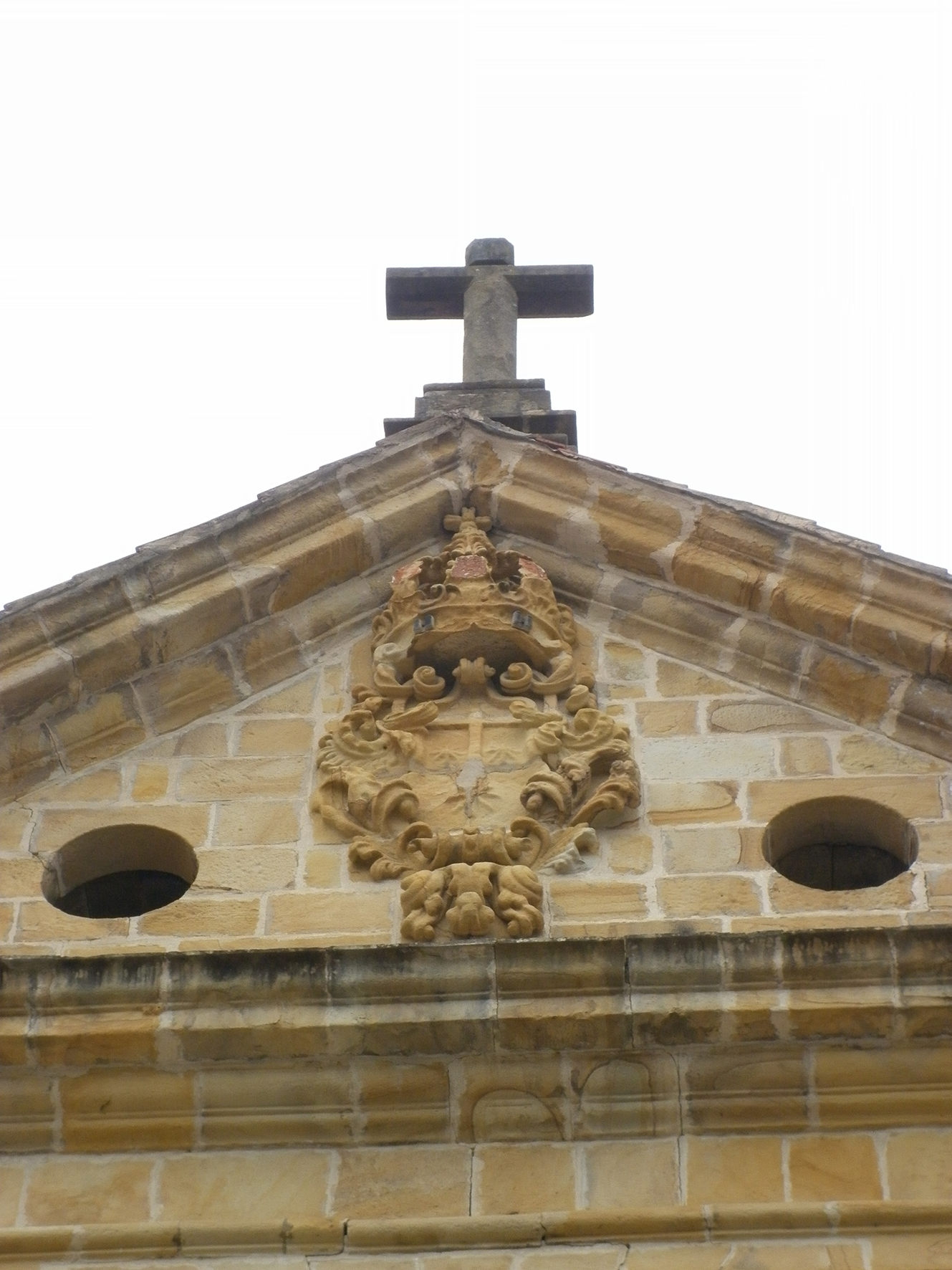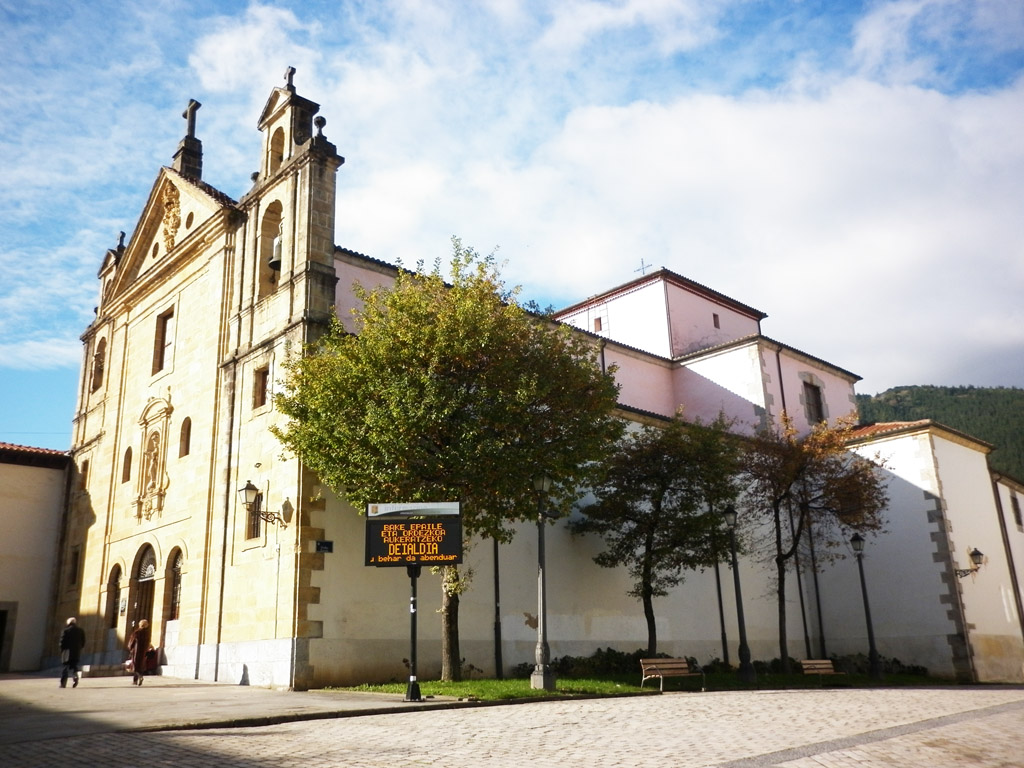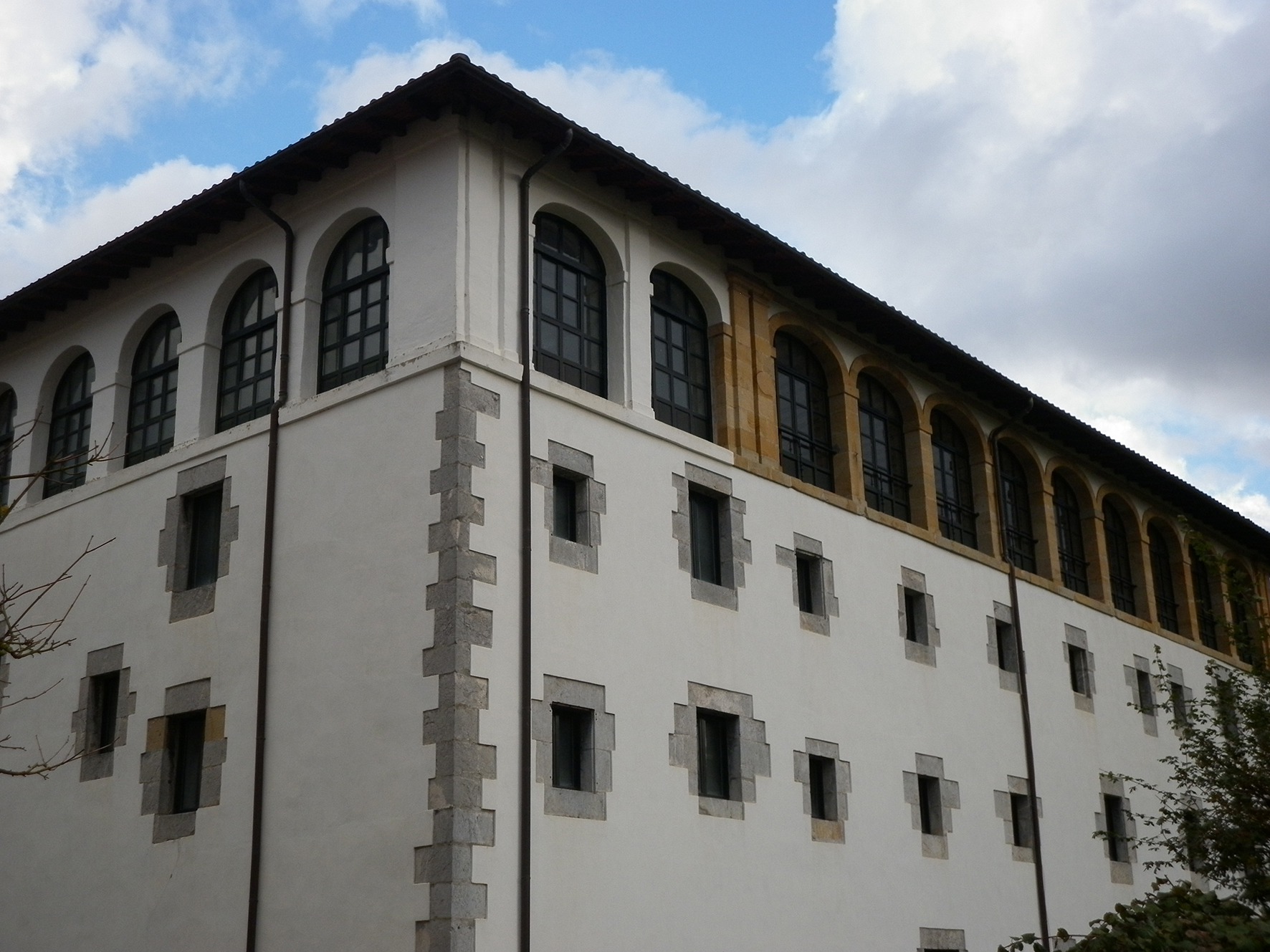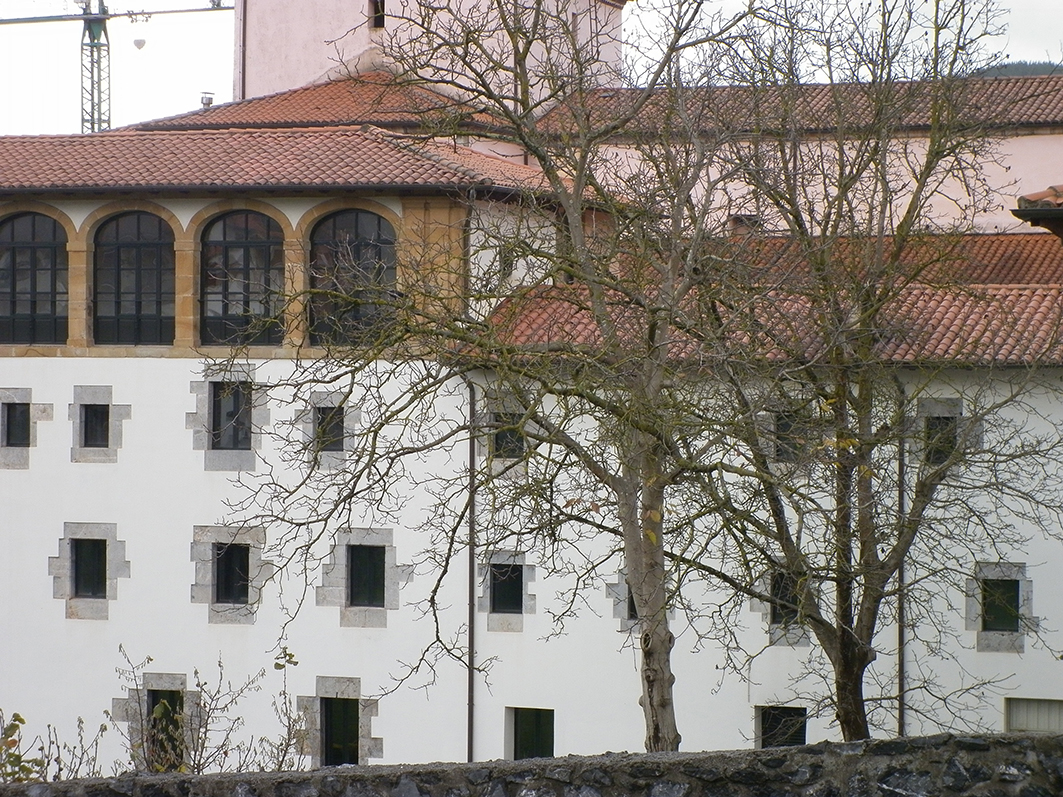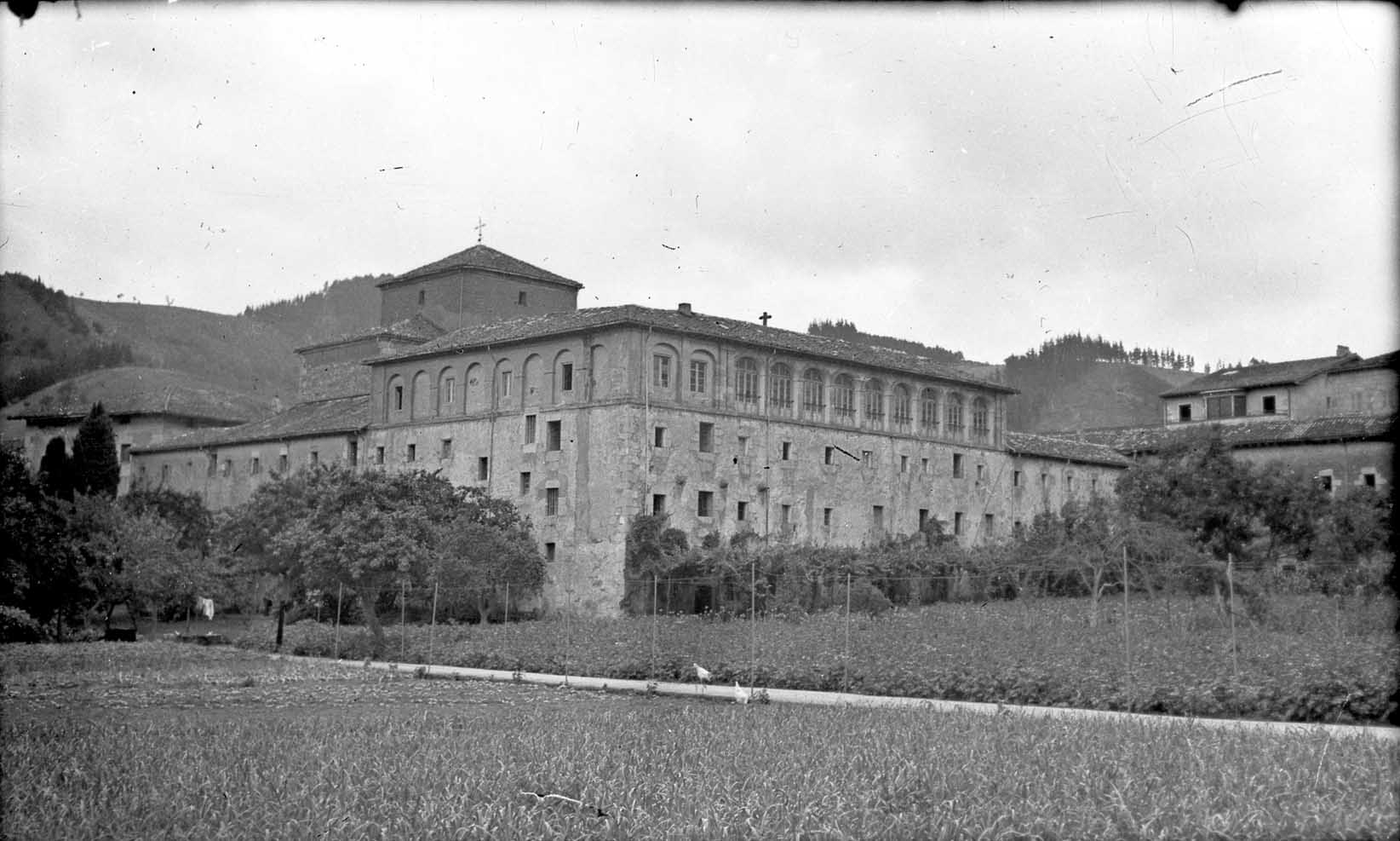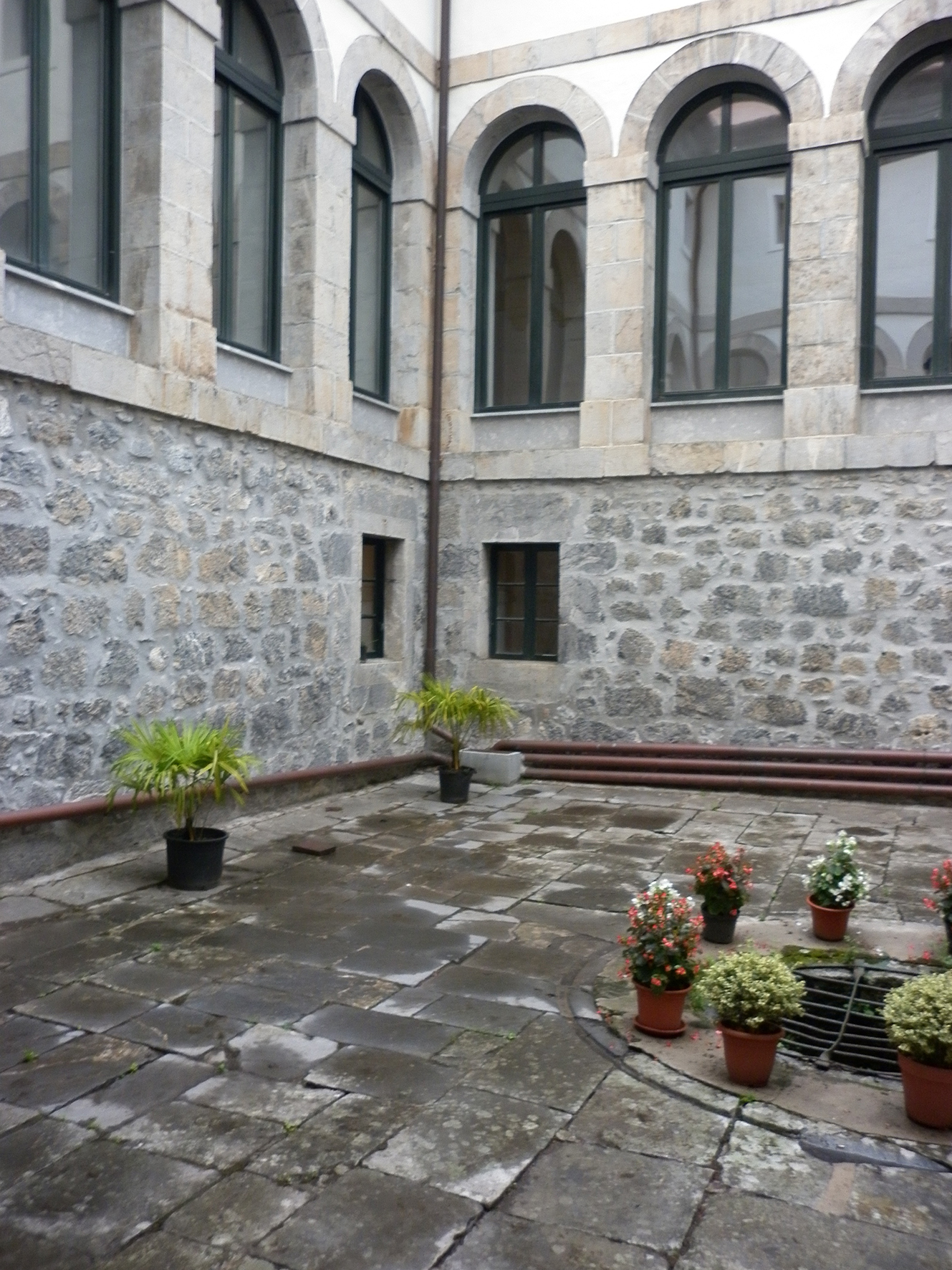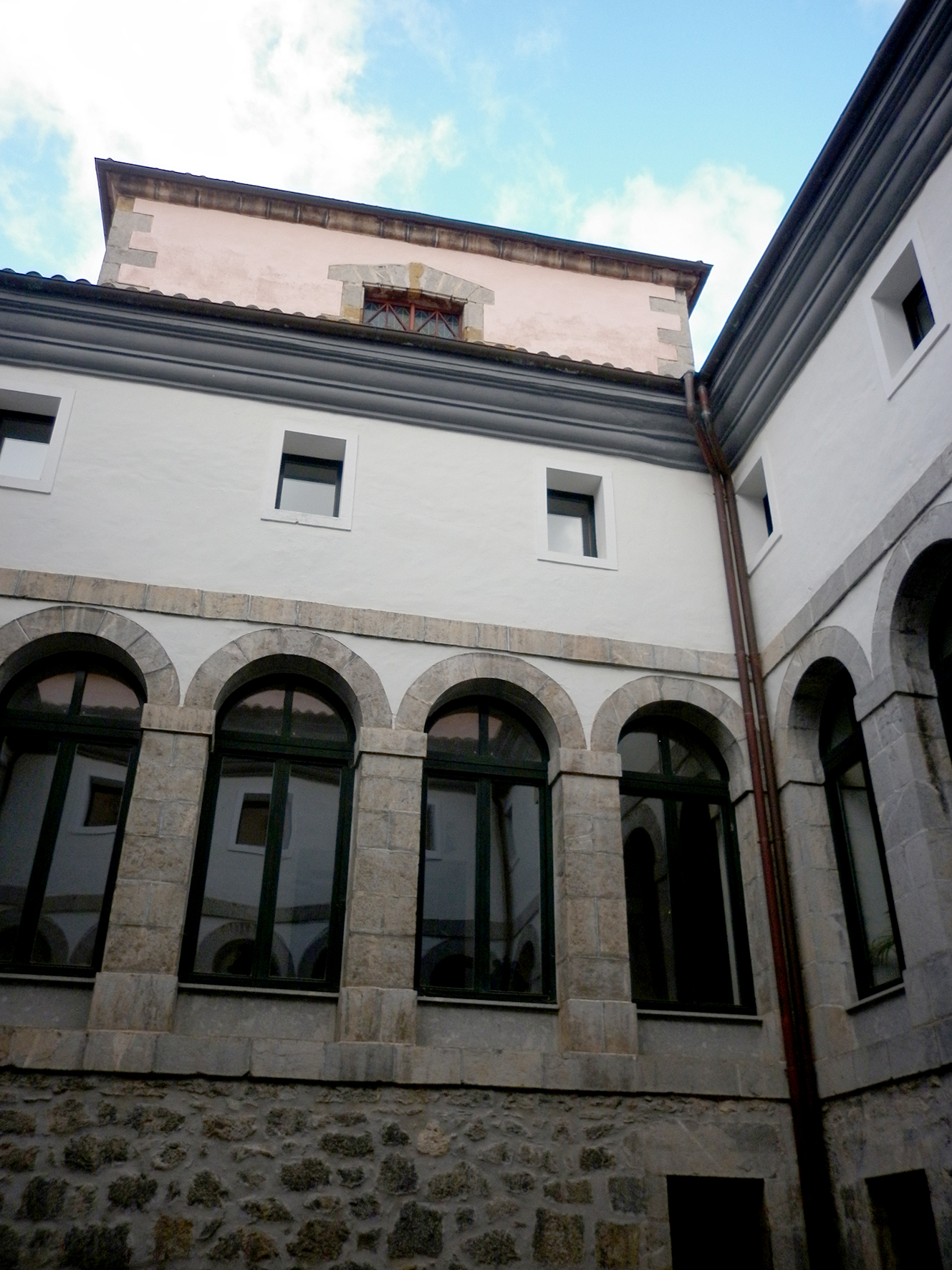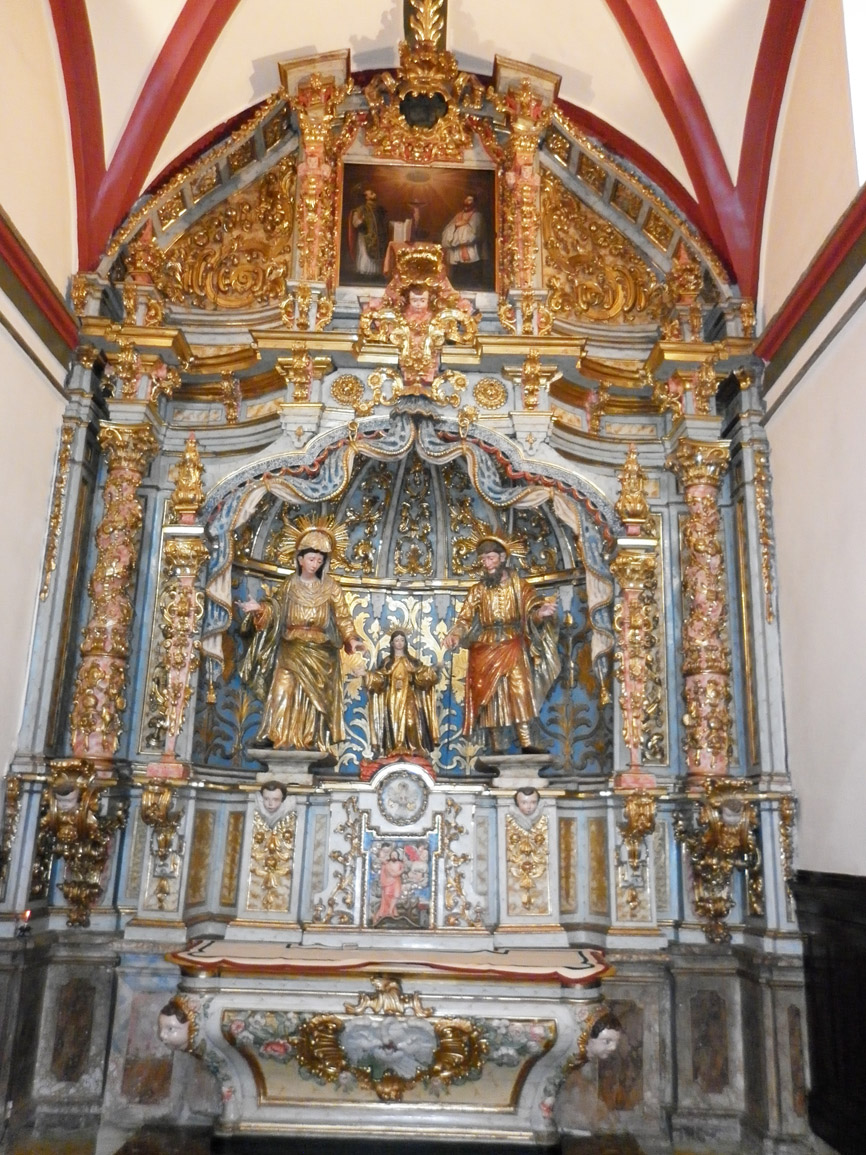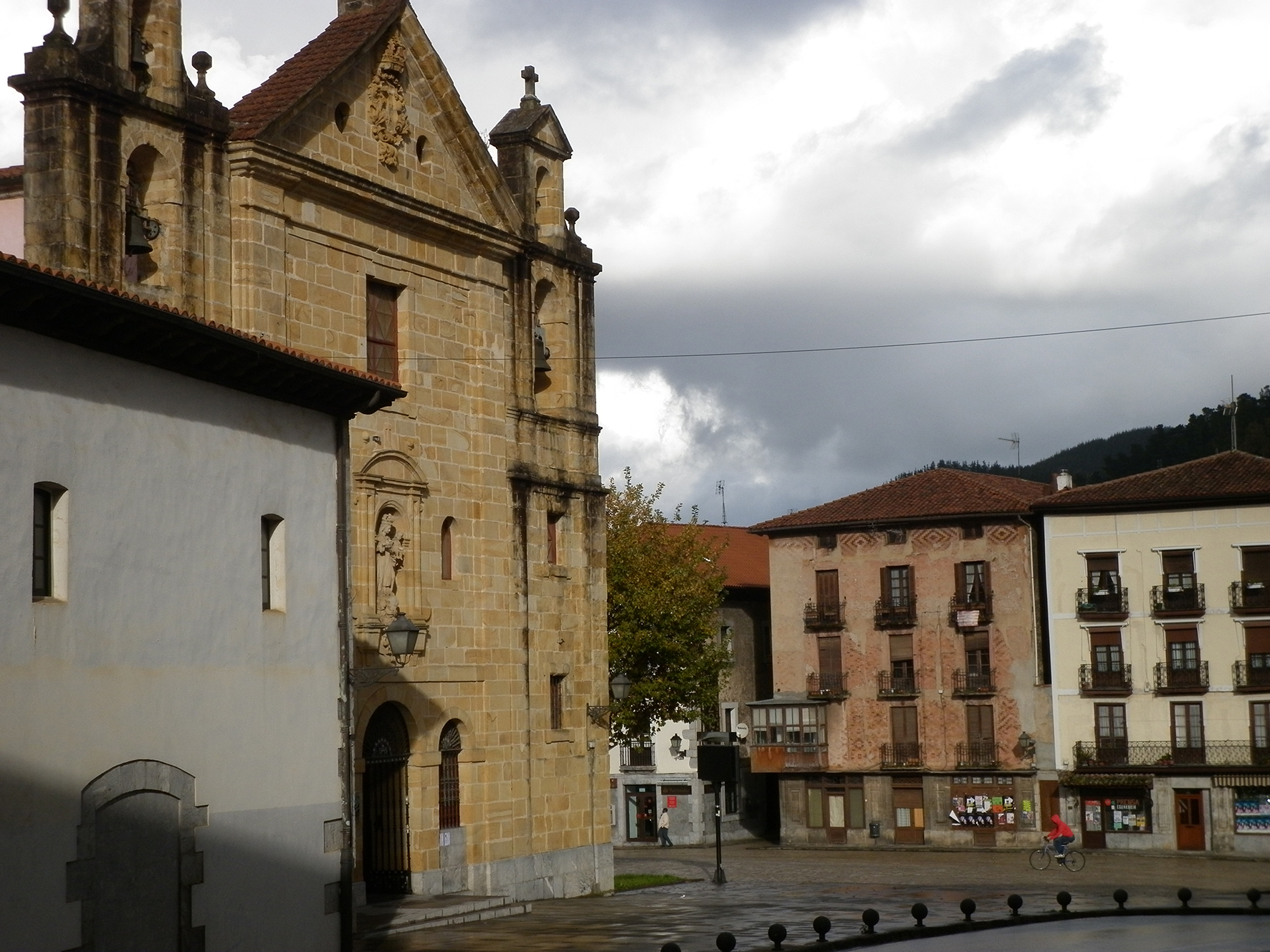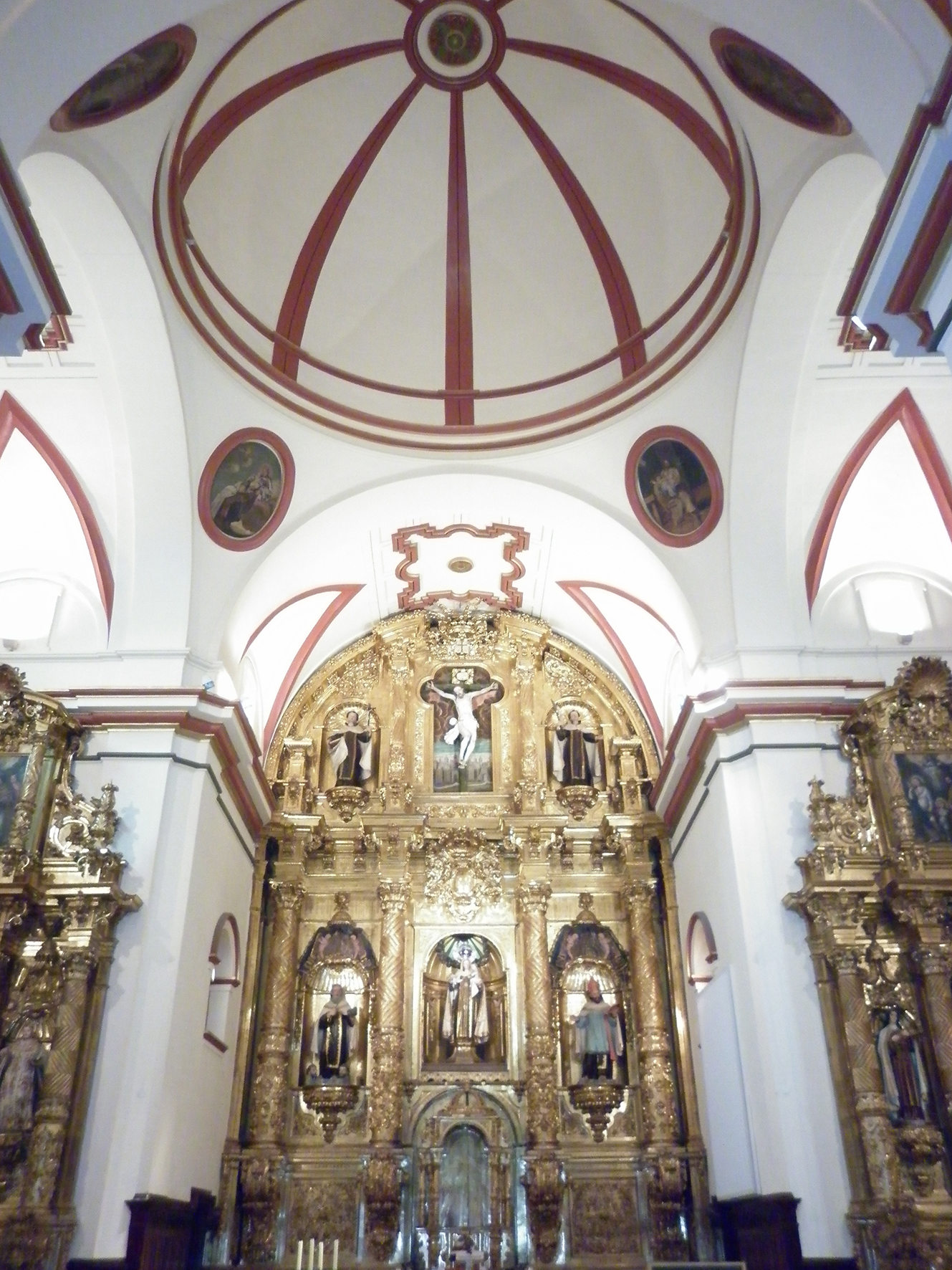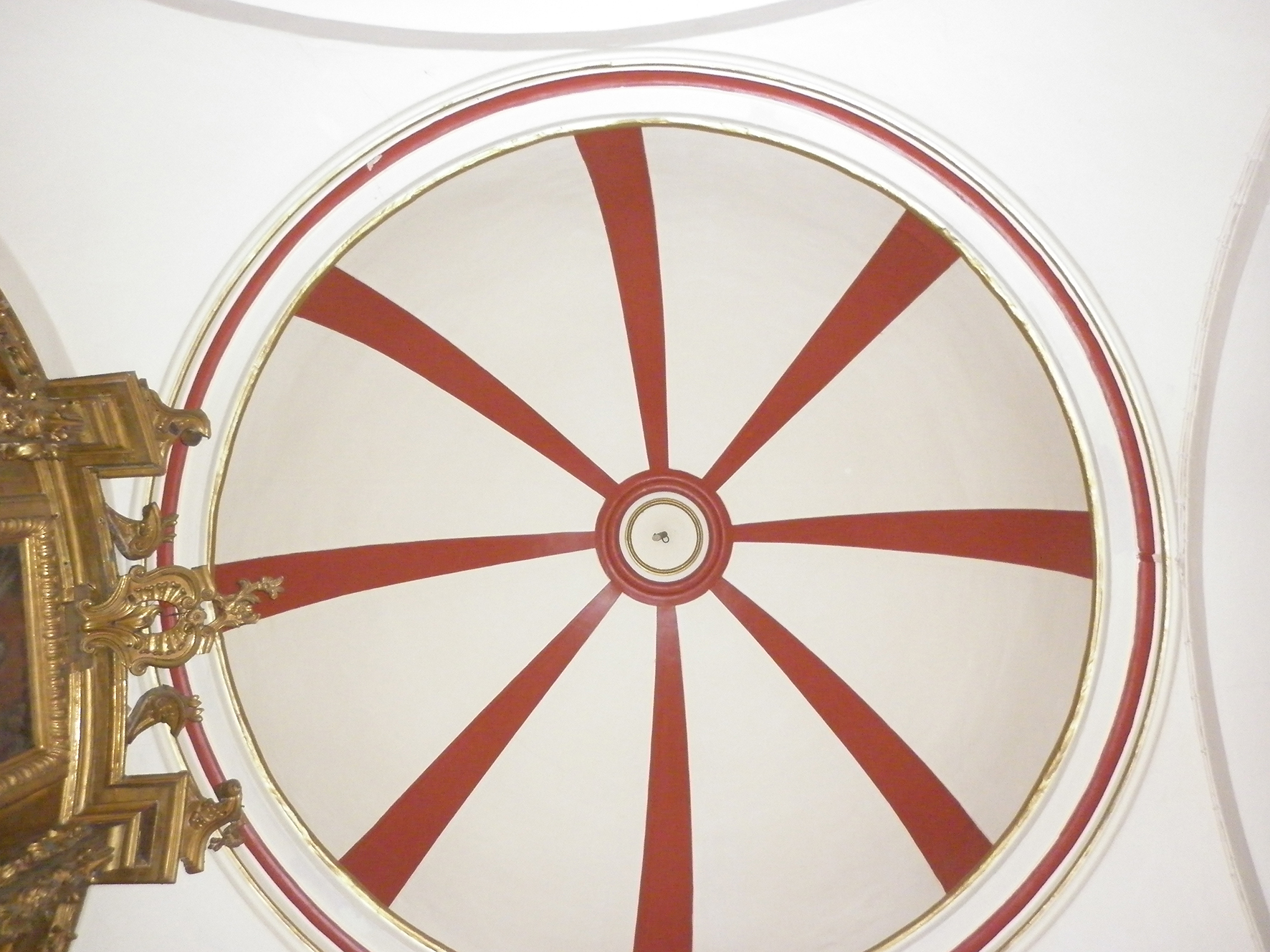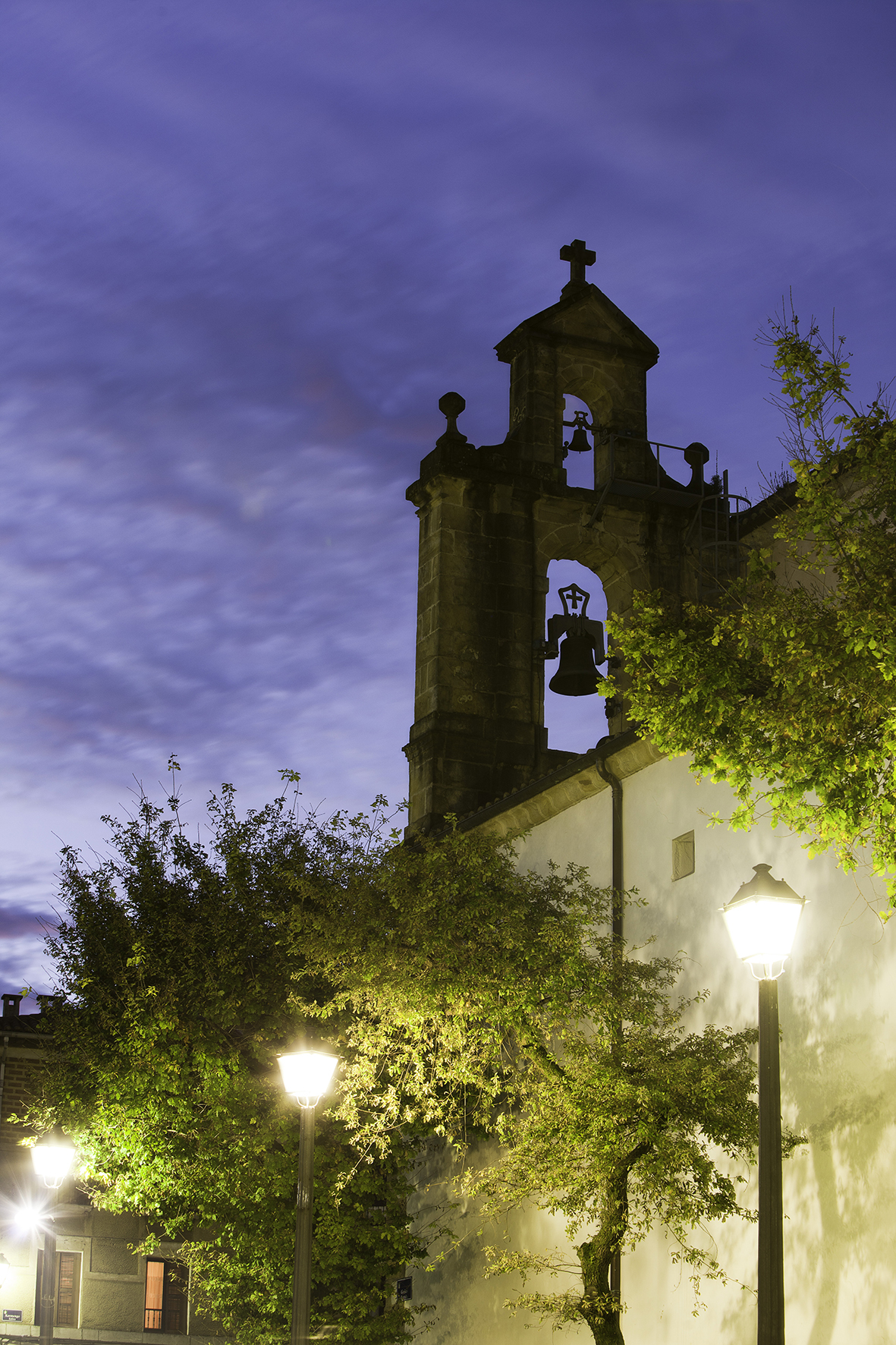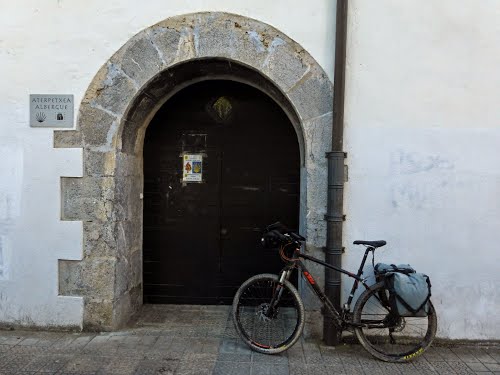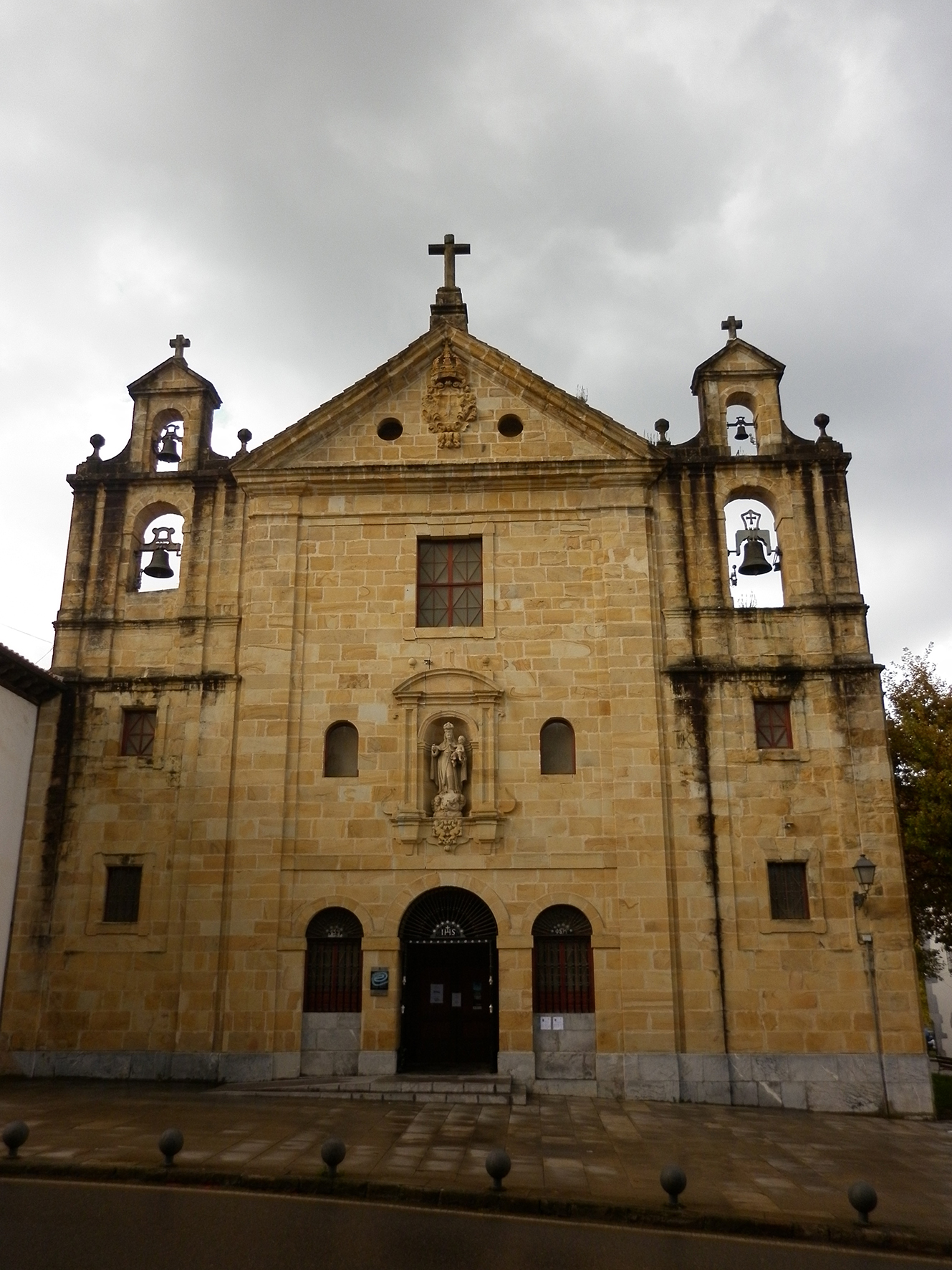The conventual complex of great proportions is made up of the residence, the garden on the north side, the cloister and the church. The convent was founded in 1691 by the abbot of the Collegiate Church of Zenarruza, Ignacio de Munibe y Axpe, son of the counts of Peñaflorida.
The church built under the Baroque style was inaugurated in 1724. The architect is unknown although the construction is attributed to the Carmelite Fray Marcos. In 1808, the convent was suppressed and it became a barracks for French troops. Likewise, in 1839, due to the exclaustration, the religious were expelled until 1869.
The facade made of sandstone arranged in ashlar masonry has three bodies: one central and two laterals. The central one, higher than the sides, houses a niche with the sculpture of the Virgen of Carmen and is topped by a triangular pediment that includes the coat of arms of the Order. The lateral bodies, lower and narrower, are topped by gables.
The interior of the temple has a Latin cross shape, a straight apse and three halls. The two lateral halls, in the same way as the Carmel churches, are arranged as a processional cloister. Its covering is done by means of domes, while the central hall and the arms of the transept are made with lunettes and with a cupola.
The main altar, in baroque style, is presided over by the Virgen of Carmen; to the right is saint Cyril of Alexandria and to the left, saint Elias. The altarpiece Christ on the Cross is finished off with saint Angelo on the right and saint John of the Cross on the left. The lateral altars, also baroque, are dedicated to saint Joseph (Gospel) and saint Teresa (Epistle). Next to this altar, there is another one dedicated to san Joaquín and santa Ana.
Each side hall contains four altars. Those on the right are dedicated to the Sacred Heart, saint Michael, saint Teresa of Lisieux and to Calvary or Crucifixion of Christ. Those on the left are for the Flagellation, saint John of the Cross, saint Anthony of Padua and the Souls of Purgatory.
Currently, a part of the premises of this convent is enabled as a hostel for pilgrims on the Camino de Santiago.




